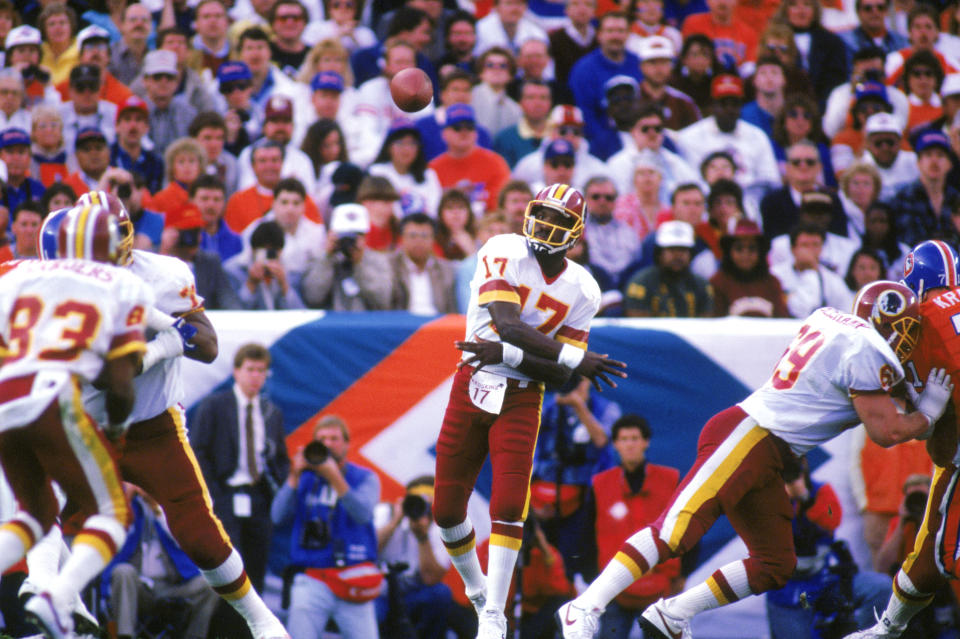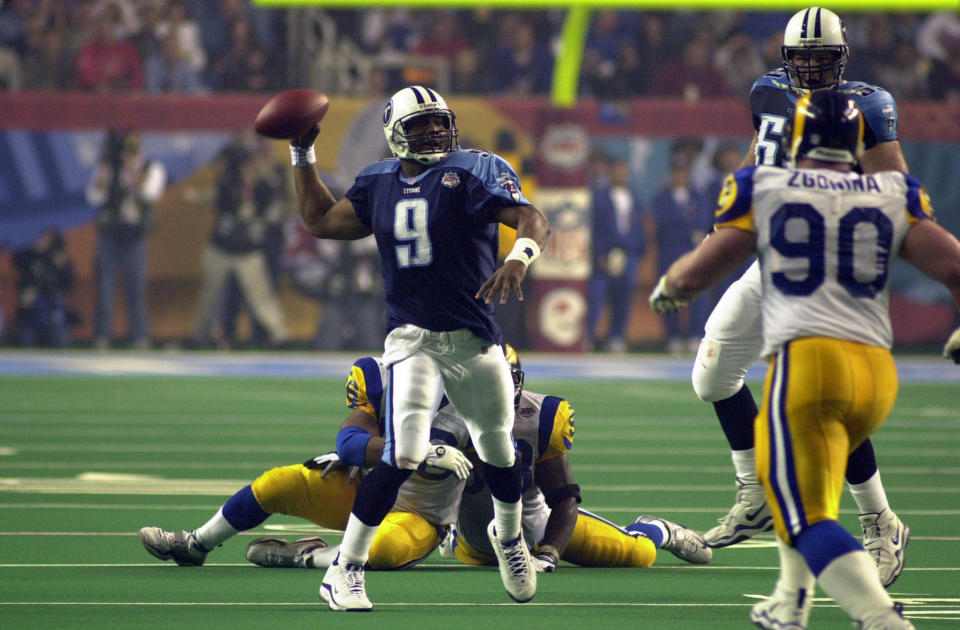Thirty-five years ago Tuesday, Doug Williams made history. He became the first Black quarterback to start a Super Bowl, leading Washington to a 42-10 win over Denver that included a stunning 35-point second quarter that propelled the team to victory.
On Feb. 12, both of the teams in Super Bowl LVII will feature a Black starting quarterback for the first time in the championship game’s history. Kansas City’s Patrick Mahomes, already a Super Bowl winner, and Philadelphia’s Jalen Hurts, looking to successfully wrap his coming-of-age season, will guide their teams in Arizona.
Progress does not come easily or even quickly to the NFL. But this is a sign of progress.
Williams’ victory in Super Bowl XXII was a watershed moment for Black men in football. The many quarterbacks who had come before Williams were forced into other positions because the NFL’s powers that be either bought the lie that Black men were not smart enough to be quarterbacks or upheld the myth that Black men were not good leaders or simply would not allow a Black man to be the likely face of their team.
Williams knew many of those men, if not personally then he certainly knew their names: Marlin Briscoe. Shack Harris. Jimmy Ray. Eldridge Dickey. All were stars at the position at their respective colleges but in the post-segregation NFL and AFL never got a fair chance to prove themselves as professionals because of anti-Black bias when it came to quarterbacks.


Dickey was the first Black quarterback to be drafted in the first round, in 1968, but was immediately moved to receiver by the Raiders. He carried the anger he felt over that move for the remainder of his relatively brief life. That same year, Briscoe made history when he got five starts for Denver and had some success; but he didn’t get the chance to compete for the job the next season and never played QB again. He later became a Pro Bowl receiver with the Buffalo Bills, where one of his quarterbacks was Harris.
Harris would make 41 starts for three teams over his career, but was never truly embraced as the starter anywhere he went, even after leading the Los Angeles Rams to an 11-2 record in 13 starts in 1975, suffering a shoulder injury late that season. In 1976, he found himself in a three-way fight with Pat Haden and Ron Jaworski, and booed every time he made a mistake.
They were all talented, and in many ways weren’t much different than some of the most accomplished quarterbacks of this generation. In 2018, Williams told Yahoo Sports that Briscoe — called “The Magician” — was Michael Vick and Mahomes before that pair were born because of his ability to get out of trouble and make plays. Harris said Russell Wilson reminded him of Briscoe.
For years, Black quarterbacks remained an anomaly. Joe Gilliam won the starting job over Terry Bradshaw with the 1974 Pittsburgh Steelers, but lost it midway through the season and then battled substance abuse issues. He was out of the league within a few years. J.J. Jones was Joe Namath’s backup with the Jets in 1975.
Then came Williams, the 17th overall NFL Draft pick in 1978, selected by Tampa Bay. He helped get the Buccaneers to their first playoff appearance and postseason win in 1979, and went 33-33-1 with two more playoff appearances in five seasons.
After the 1982 season, knowing that his $120,000 salary was the lowest for any starter in the league and less than what 12 backup QBs were making, Williams asked for $600,000 per year. Buccaneers owner Hugh Culverhouse wouldn’t pay a penny over $400,000. So Williams walked away from the sport, temporarily, at least. As Tampa Bay went 2-14 in the ’83 season, Williams sat out. In 1984-85 he was in the USFL, and was brought back into the NFL by Joe Gibbs with Washington in 1986. Gibbs was the Bucs’ offensive coordinator during Williams’ rookie year.
The reunion was beneficial for both men.
Even still, Williams’ on-field success was not some kind of bellwether. Warren Moon wasn’t picked in the 1978 draft despite his incredible career at the University of Washington, and when the CFL offered him a chance to play quarterback, he took it. Now, Moon is the only player enshrined in the CFL and Pro Football Halls of Fame. Randall Cunningham could do it all for the Philadelphia Eagles, often because he had to since the team was bereft of top-notch skill players.


Steve McNair spurned the University of Florida’s offer to play running back and, after a stellar career at HBCU Alcorn State, became the No. 3 draft pick in 1995, at that point the highest a Black QB had ever been taken. In 2003, McNair became the first Black quarterback to win the NFL Most Valuable Player award, though he shared it with Peyton Manning.
Again, a run of success with a Black quarterback running the offense didn’t do much to move the needle. There was McNair, Donovan McNabb, Daunte Culpepper, Aaron Brooks, Kordell Stewart — all led their teams to the playoffs, and in McNair and McNabb’s case, the Super Bowl — but the stories of talented Black high school quarterbacks who were made to switch positions in college, not even getting the chance to play the position at that level let alone the NFL, persisted.
Vick broke a new barrier when he was taken first overall in the 2001 NFL Draft and was a three-time Pro Bowler before his own actions took a major toll on his career.
Many of these players had skills that went far beyond being just pocket passers, and not many coaches and coordinators knew what to do with them. The prototypical NFL quarterback had long been tall, white — and not much more mobile than a statue in your nearest park.
It has taken decades, but many have finally come to realize that the athleticism many Black quarterbacks possess is a plus, and that a little bit of speed and an ability to run and throw is a good thing. Rules around protecting quarterbacks at all costs have helped too, though it’s debatable whether that protection applies to quarterbacks of a certain complexion (Cam Newton says hello!).
On opening day 2020, 10 teams had a Black quarterback as their starter, the most ever in the NFL.
That does’t mean Mahomes and Hurts arrived here without their share of detractors. While Mahomes’ abilities are now so undeniable there are some who are already anointing him as the game’s new GOAT, he wasn’t seen as such in the 2017 draft, when Mitchell Trubisky was chosen second overall to Mahomes’ 10th.
Hurts has been doubted not just from Day 1. When he was a second-round draft pick in 2020, there were questions as to why he was even chosen when Philadelphia had Carson Wentz still on the roster. Even at the start of this season, not all outside observers were convinced he should be the starter.
The NFL owner class is still seemingly steadfastly refusing to see Black men as head coaching material, but at least it has come around on Black quarterbacks.
Progress doesn’t always come easily or quickly in this league.
